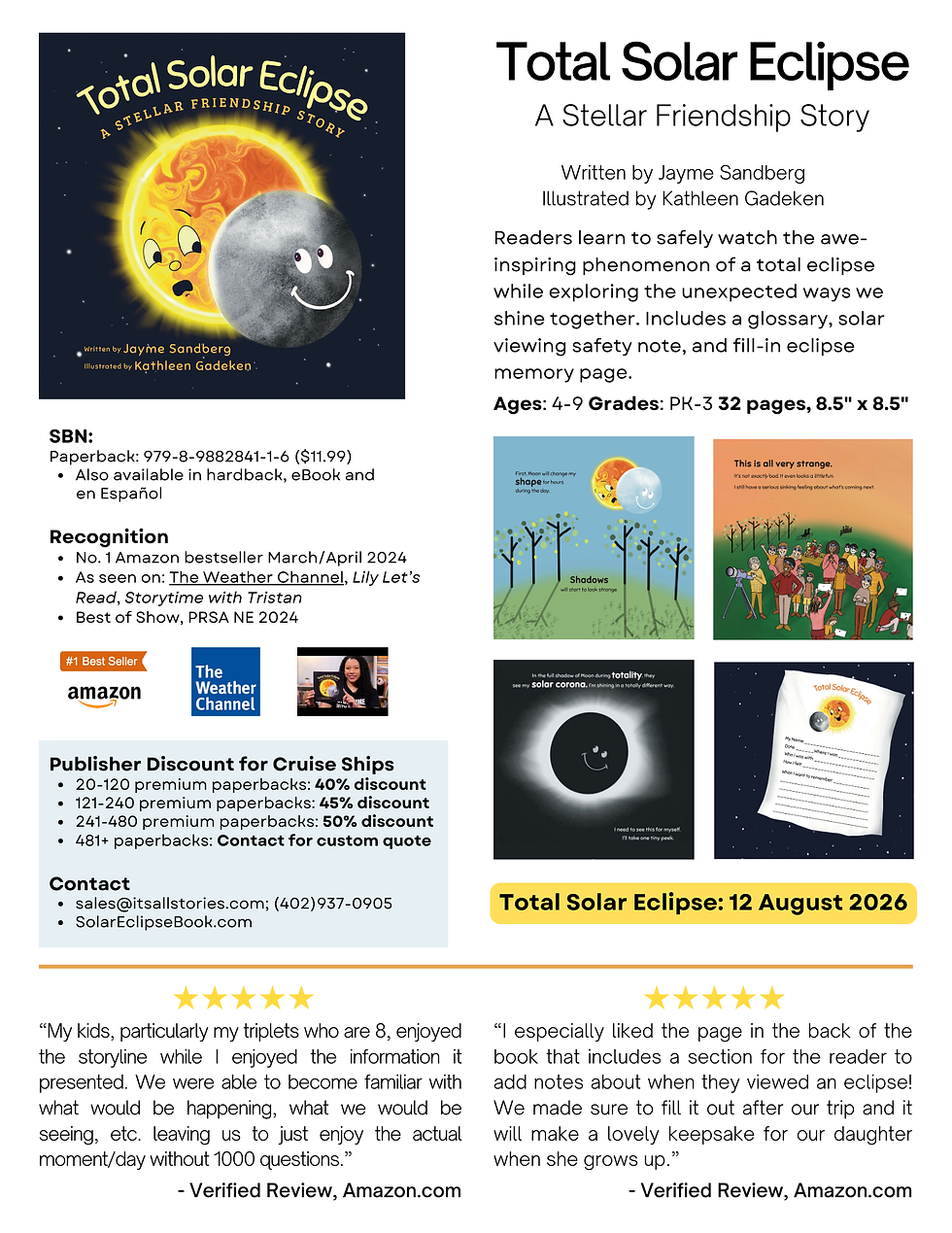When is the solar eclipse
- It's All Stories

- Sep 30, 2023
- 2 min read
Updated: Nov 13, 2023
North America is in for a double celestial treat in the next six months with two stellar solar eclipse events, an annular solar eclipse on October 14, 2023, and a total solar eclipse on April 8, 2024. These special solar eclipses are must-see moments for everyone, not just those who like to study astronomy or look at the stars.

Annular Solar Eclipse – Saturday, October 14, 2023
The next eclipse in North America is an annular solar eclipse on Saturday, Oct. 14, 2023. While everyone in the contiguous United States will be able to see a partial eclipse on that day (with special solar viewers, of course), people in the “path of annularity” will be able to see the Sun transform into a donut as the Moon passes in front of it.
The “Ring of Fire” will cross North, Central, and South America. with special solar viewers. Remember, it is never safe to look at the Sun during a partial or annular eclipse without eye protection specifically designed for solar viewing.
Total Solar Eclipse – Monday, April 8, 2024
Less than six months after the annular eclipse comes the most exciting eclipse of all, the total solar eclipse on April 8, 2024. Unlike the annular eclipse, if you’re lucky enough to be in the path of totality during a total solar eclipse, you’ll see the Moon completely obscure the Sun, plunging the area into eerie darkness for a few minutes. This incredible event will be visible to more than 32 million people in the U.S. and many millions more who are planning to travel to see it.
If you’re wondering if a trip is worth it, the answer is a resounding, “Yes!” The anticipation for this total solar eclipse has been building for years. While total solar eclipses happen often somewhere in the world, it's a rare occurrence for any specific location.
During totality, you'll witness the Sun's incredible atmosphere called the solar corona shimmering around the darkened Moon. Totality of a total solar eclipse is the only way anyone can ever see the solar corona. Totality is one of nature’s most awe-inspiring events, one you have to see in person to fully understand.
Just like during the annular eclipse, eye protection is crucial during a total solar eclipse. However, unlike a partial or an annular eclipse, you can remove your eclipse glasses during the brief period of totality when the Sun’s bright disk is entirely hidden behind the Moon.
Plan Ahead
Planning ahead will help make sure eclipse viewers of all ages can safely and fully enjoy the experience of these celestial events.
Remember that safety is paramount when viewing any solar eclipse. Except for those very short minutes during totality of a total solar eclipse, you must always use eclipse glasses or an alternative safe solar viewing method, such as a pinhole projector, to view the Sun. Make sure you order them ahead and get them from a trusted source.
The book Total Solar Eclipse: A Stellar Friendship Story is a great way to help the youngest eclipse viewers learn about how to watch a solar eclipse. You can order it here or wherever books are sold.
Where is the best place to see the annular solar eclipse? Where is the best place to see the total solar eclipse? Download NASA’s map here.




Comments